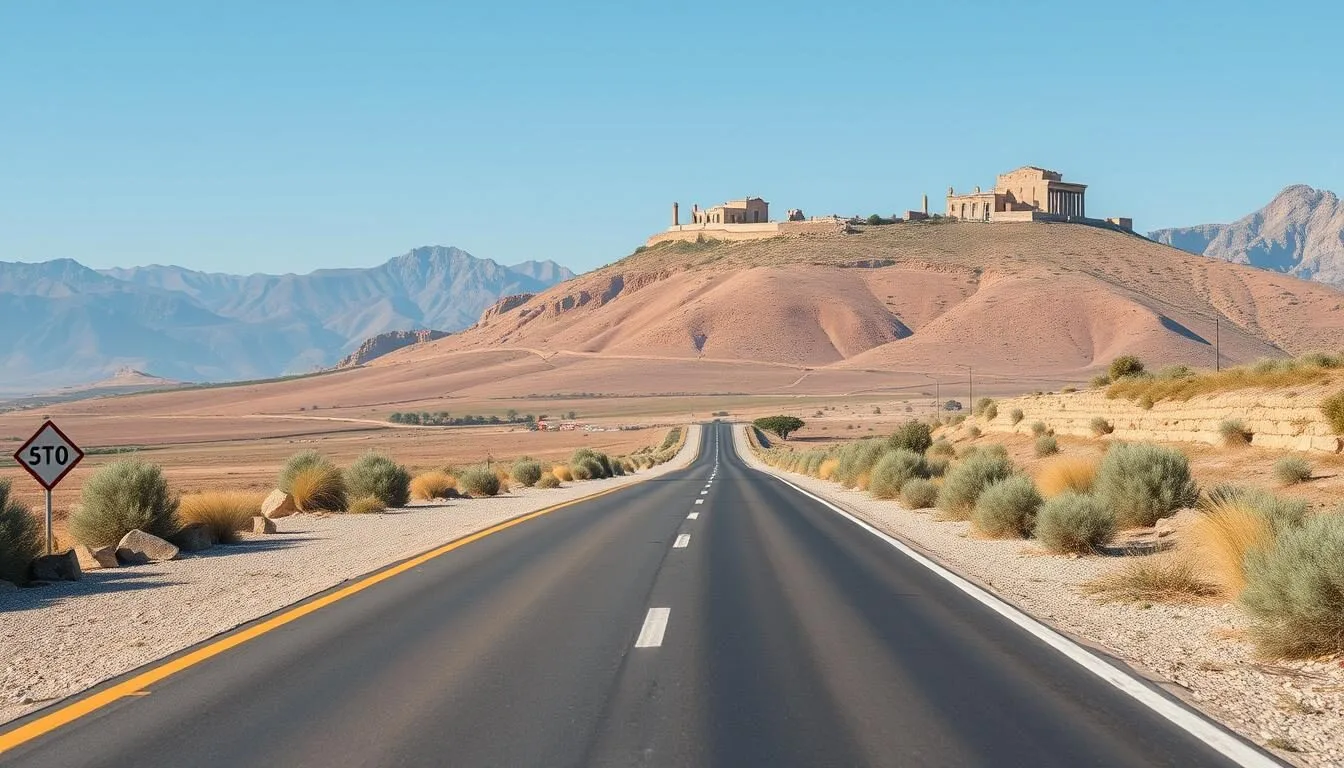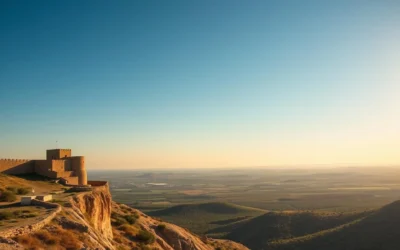Did you know that from the ancient ruins of Umm Qais, you can simultaneously view three countries—Jordan, Israel, and Syria—while gazing upon the shimmering Sea of Galilee? This remarkable vantage point is just one of many reasons why this hidden gem in northern Jordan deserves a spot on your travel itinerary. Once known as Gadara during Roman times, Umm Qais offers a fascinating blend of well-preserved black basalt ruins, breathtaking panoramic views, and rich cultural history that dates back over 2,000 years.
Getting There & Planning Your Journey
Umm Qais is located 110 km (68 miles) north of Amman in the northwestern corner of Jordan. The journey from the capital takes approximately 2 hours by car. The site sits perched on a hilltop 378 meters (1,240 feet) above sea level, offering spectacular views of the surrounding landscape.
From Amman
The most convenient way to reach Umm Qais is by private car or taxi. The route follows the well-maintained highway north toward Irbid before turning west toward the ruins. Many visitors combine their trip with stops at Jerash and Ajloun Castle, creating a full day of exploring northern Jordan’s historical sites.
Find the Best Flight Deals to Jordan
Start your Umm Qais adventure with affordable flights to Amman, Jordan’s main gateway.
Guided Tours
If you prefer not to drive, numerous tour operators offer day trips from Amman that include transportation, guided tours, and sometimes lunch. These tours typically combine Umm Qais with other northern attractions like Jerash and Ajloun Castle.
Explore Umm Qais with Expert Guides
Join a guided tour to learn about the fascinating history and hidden stories of this ancient Roman city.
Best Time to Visit Umm Qais
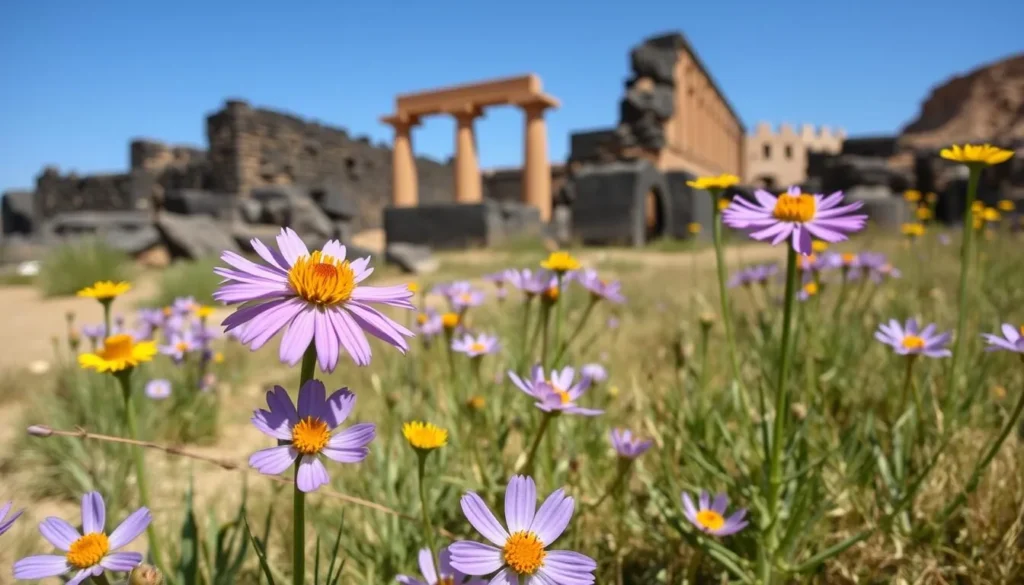
Recommended Seasons
Spring (March to May)
Spring is arguably the best time to visit Umm Qais. Temperatures range from 15-25°C (59-77°F), and the surrounding hills burst with colorful wildflowers. The clear skies offer excellent visibility for enjoying the panoramic views across three countries.
Autumn (September to November)
Fall brings pleasant temperatures between 18-28°C (64-82°F) and fewer crowds. The light is particularly beautiful for photography during these months, with golden hues illuminating the black basalt ruins.
Seasons to Avoid
Summer (June to August)
Summers can be extremely hot, with temperatures often exceeding 35°C (95°F). The exposed hilltop location offers little shade, making exploration uncomfortable during midday hours.
Winter (December to February)
While winters are mild compared to many destinations, occasional rain and fog can obscure the famous views. Temperatures range from 5-15°C (41-59°F), and some facilities may have reduced hours.
Getting Around Locally
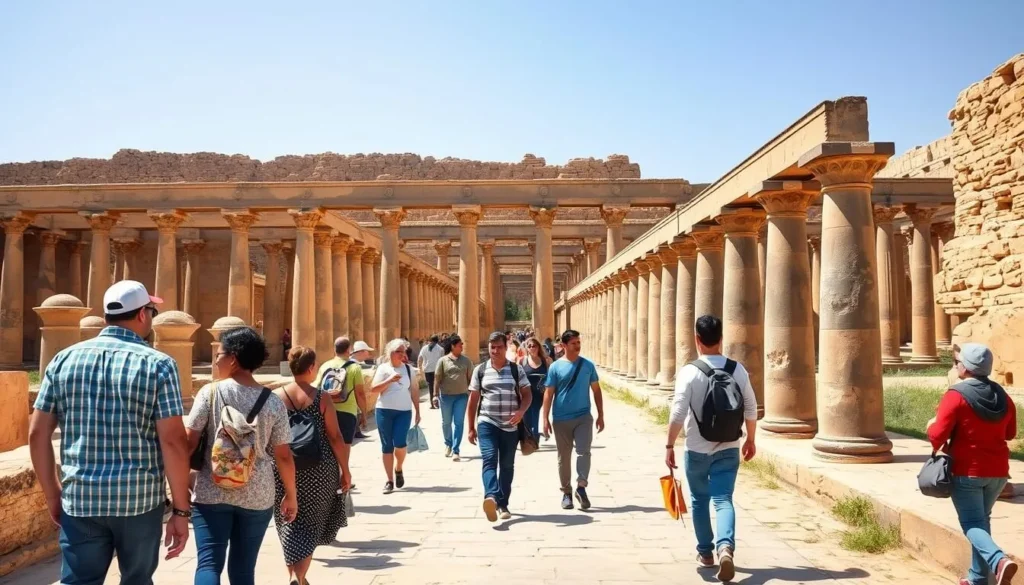
Umm Qais is a compact archaeological site that’s best explored on foot. The entire site can be comfortably covered in 2-3 hours of leisurely walking. Wear comfortable shoes with good grip, as some paths are uneven and can be slippery, especially after rain.
Site Layout
The site is divided into several sections, including the West Theatre, the colonnaded street (Cardo Maximus), the Ottoman village, and various viewpoints. A logical route begins at the entrance near the museum and moves clockwise around the site, ending at the restaurant with its spectacular views.
Local Transportation
If you’re staying in nearby Irbid rather than visiting as a day trip from Amman, taxis are readily available for the 45-minute journey to Umm Qais. Negotiate the fare before departing, and consider arranging for the driver to wait or return at a specific time, as taxis at the site itself can be scarce.
Explore Jordan at Your Own Pace
Rent a car to discover Umm Qais and other northern Jordan attractions on your own schedule.
Where to Stay
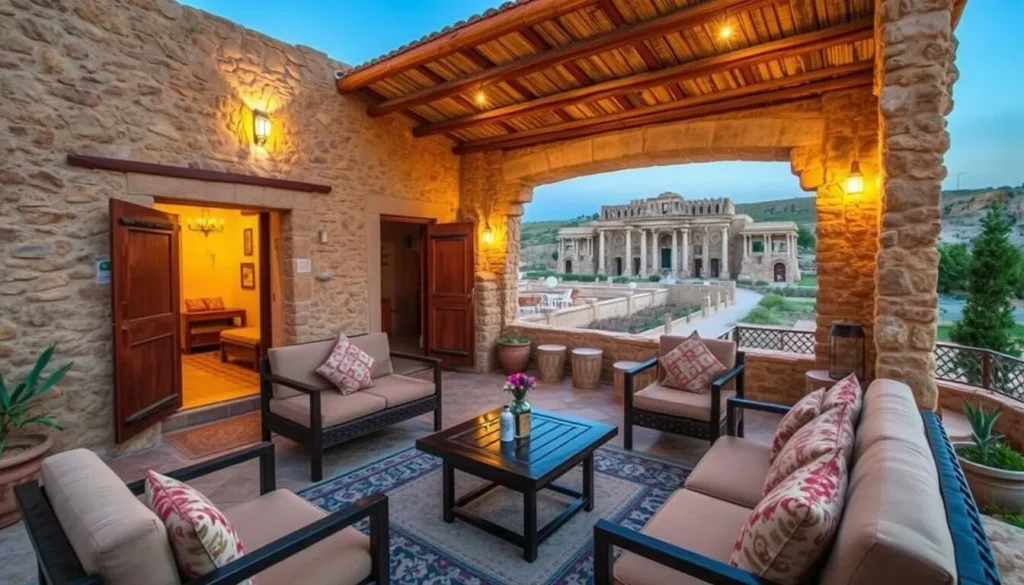
While Umm Qais itself has limited accommodation options, there are several choices in the surrounding area that make excellent bases for exploring the ruins and other northern Jordan attractions.
Umm Qais Guesthouses
For an authentic experience, consider staying at one of the renovated Ottoman-era houses in Umm Qais village. Beit Al Baraka and other local guesthouses offer traditional accommodations with modern amenities and often include home-cooked Jordanian meals.
These intimate properties provide a unique opportunity to experience local hospitality and wake up just steps from the ancient ruins.
Irbid Hotels
The city of Irbid, about 30 minutes away by car, offers several mid-range hotels with modern amenities. Irbid’s central location makes it a convenient base for exploring multiple northern Jordan attractions.
Options include the Irbid Plaza Hotel and the Sedra Hotel, both offering comfortable rooms, restaurants, and helpful staff who can assist with transportation arrangements.
Amman Accommodations
Many visitors choose to stay in Amman and visit Umm Qais as a day trip. Jordan’s capital offers the widest range of accommodation options, from luxury international chains to boutique hotels and budget hostels.
The Jabal Amman and Rainbow Street areas are particularly popular with travelers, offering charming hotels within walking distance of restaurants and shops.
Dining & Local Cuisine
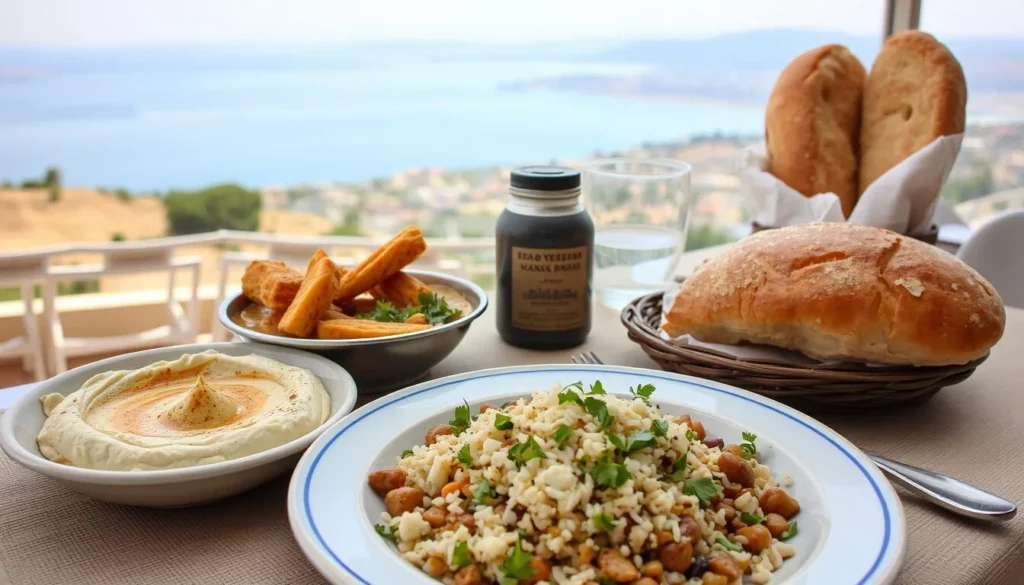
Umm Qais Restaurant
The on-site restaurant at Umm Qais is housed in a beautifully restored Ottoman-era building and offers one of the most spectacular dining views in Jordan. From its terrace, you can enjoy panoramic vistas of the Sea of Galilee, the Golan Heights, and the Jordan Valley while savoring traditional Jordanian cuisine.
The menu features local specialties such as mansaf (Jordan’s national dish of lamb cooked in yogurt sauce), maqluba (an “upside-down” dish of rice, vegetables, and meat), and a variety of mezze (small plates) including hummus, moutabel, and tabbouleh. Prices are reasonable, with main dishes averaging around 7-10 JD ($10-14 USD).
Local Kitchen Experience
For a more immersive culinary experience, several local families in Umm Qais offer home-cooked meals through community tourism initiatives. These experiences provide a wonderful opportunity to taste authentic northern Jordanian cuisine prepared with locally sourced ingredients while supporting the local community.
Experience Authentic Jordanian Cuisine
Book a local kitchen experience or food tour to taste the flavors of northern Jordan.
Attractions, Sightseeing & Activities
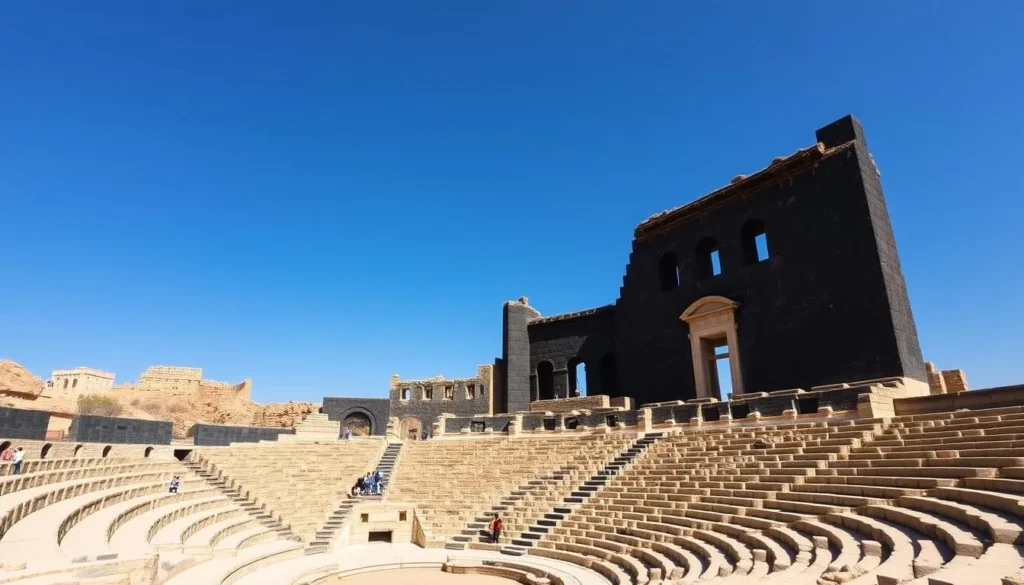
West Theatre
The West Theatre is one of Umm Qais’s most impressive structures. Built in the 2nd century AD, this Roman amphitheater could seat up to 3,000 spectators. Unlike many Roman theaters built with limestone, Umm Qais’s theater is constructed from black basalt, giving it a distinctive appearance. The acoustics remain remarkable to this day—stand in the center and speak normally to experience how your voice carries throughout the structure.
Basilica Terrace
This vast terrace once housed a Byzantine church built in the 6th century. Although largely destroyed by an earthquake in the 8th century, you can still see the church’s foundations, several columns, and beautiful mosaic fragments. The terrace offers some of the site’s best views of the surrounding countryside.
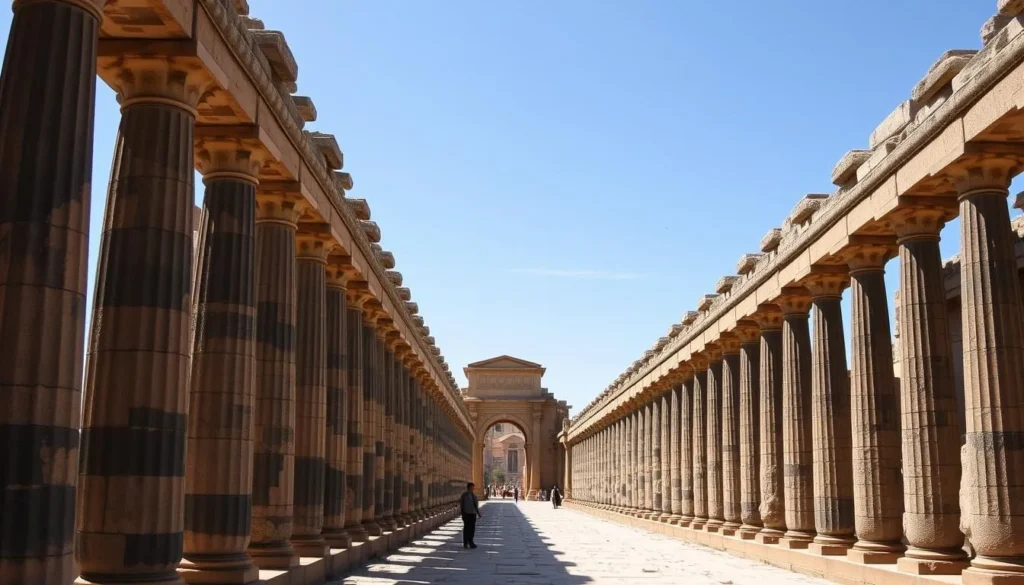
Cardo Maximus
The Cardo Maximus was the main street that ran through the heart of ancient Gadara. Walking along this colonnaded street, lined with basalt columns, you can imagine the bustling commercial center it once was. Shops and public buildings would have lined both sides, creating a vibrant urban space.
Ottoman Village
The Ottoman-era village built atop part of the ancient city offers a fascinating glimpse into more recent history. Inhabited until the 1980s, the village includes traditional houses, a mosque, and a girls’ school. The museum is housed in one of these Ottoman buildings and displays artifacts found at the site, including ceramics, statuary, and mosaics.
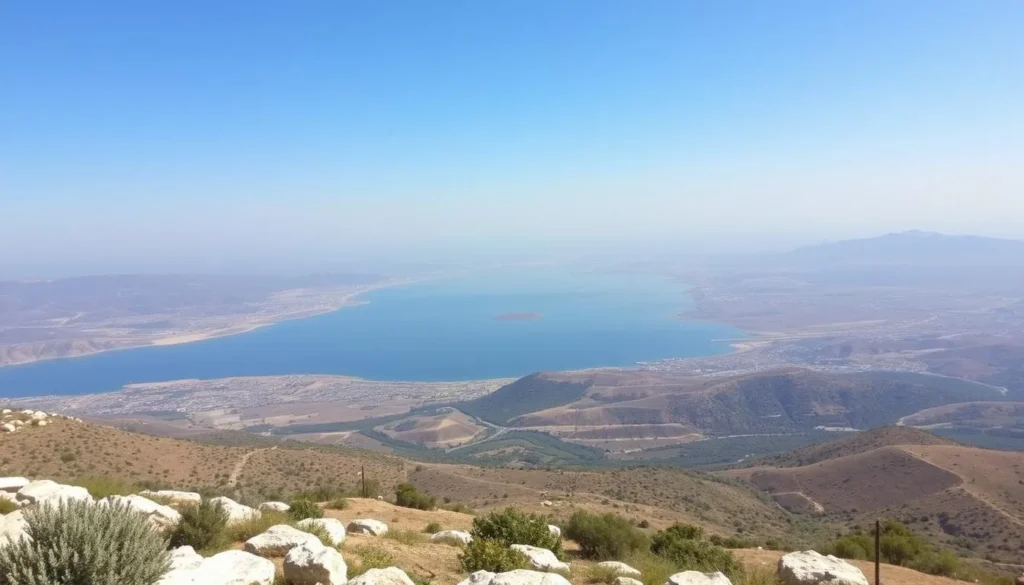
Panoramic Views
Perhaps Umm Qais’s most spectacular feature is its commanding views. From various vantage points, you can see the Sea of Galilee, the Golan Heights, and the hills of Lebanon and Syria. The best views are from the restaurant terrace, especially beautiful at sunset when the landscape is bathed in golden light.
Discover the Wonders of Umm Qais
Join an expert-guided tour to fully appreciate the historical and cultural significance of this ancient city.
Museums, Cultural Spots & Festivals
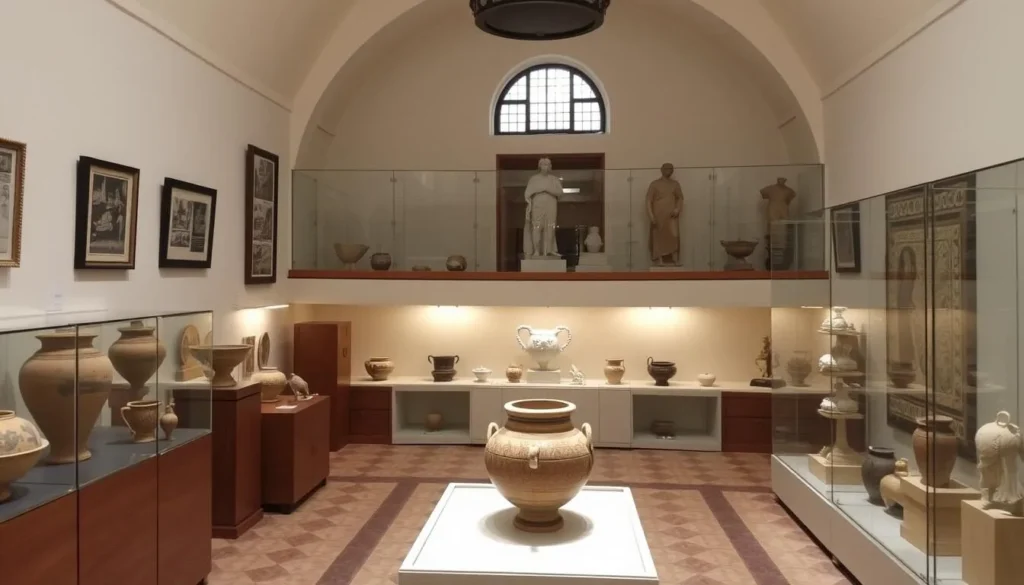
Umm Qais Museum
The on-site museum is housed in a beautifully restored Ottoman-era building and showcases artifacts discovered during excavations. The collection includes pottery, glassware, coins, and statuary spanning from the Hellenistic to the Islamic periods. Of particular note is the famous seated Tyche (the goddess of fortune) statue, a remarkable example of Roman sculpture.
The museum is divided into two main exhibition halls. The first displays ceramics and tomb findings, while the second focuses on statuary from the Roman period. In the courtyard, you’ll find larger items including basalt sarcophagi, column capitals, and intricate mosaics.
Cultural Experiences
Several community-based tourism initiatives offer cultural experiences in and around Umm Qais. These include:
Festivals and Events
While Umm Qais doesn’t host regular festivals, occasional cultural events and performances are held at the West Theatre, particularly during spring and summer. Check with the Jordan Tourism Board or local tour operators for any scheduled events during your visit.
Sports, Nature & Outdoor Experiences
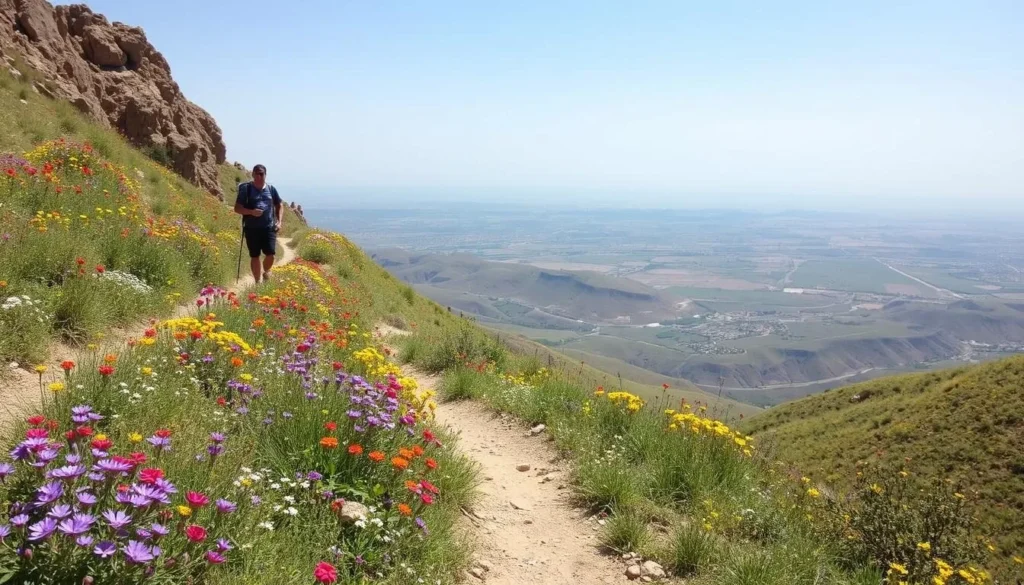
Hiking
The hills around Umm Qais offer excellent hiking opportunities with spectacular views. The area is part of the Jordan Trail, a long-distance hiking route that traverses the country. Several shorter trails of varying difficulty levels allow visitors to explore the natural beauty surrounding the archaeological site.
Birdwatching
The diverse habitats around Umm Qais attract a wide variety of bird species, making it a popular destination for birdwatchers. The best times for birdwatching are during the spring and autumn migrations when numerous species pass through the region.
Nearby Natural Attractions
Several natural attractions near Umm Qais are worth exploring if you have extra time:
Explore Jordan’s Natural Beauty
Book outdoor adventures and nature experiences in northern Jordan.
Safety, Etiquette & Local Customs
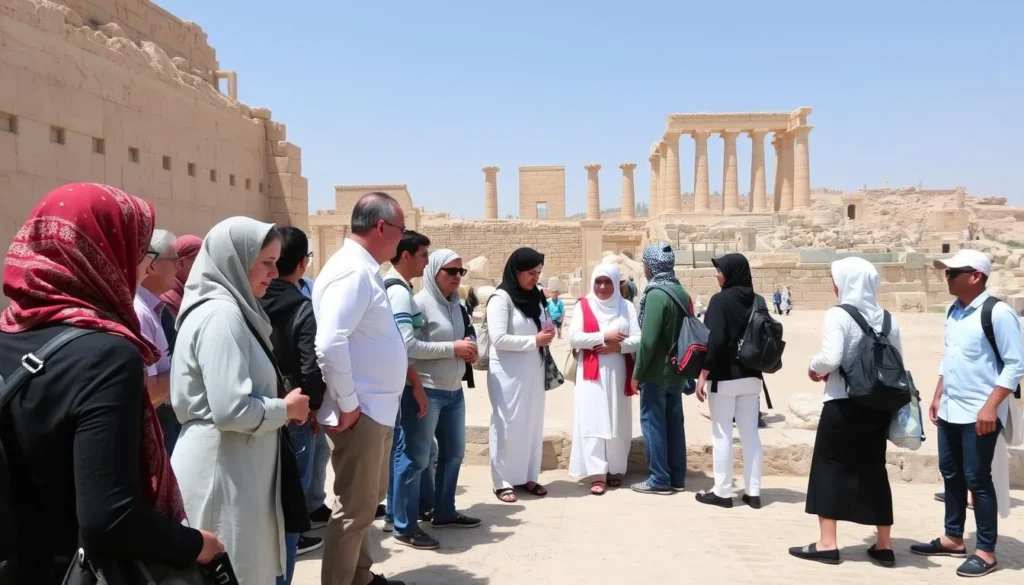
Safety
Umm Qais and northern Jordan are generally very safe for tourists. However, standard travel precautions apply:
Dress Code
Jordan is a conservative Muslim country, and modest dress is appreciated, especially in rural areas like Umm Qais. Both men and women should cover their shoulders and knees. Loose, lightweight clothing is ideal for comfort in the warm climate while respecting local customs.
Cultural Etiquette
Jordanians are known for their hospitality and friendliness toward visitors. Some cultural norms to be aware of:
Practical Travel Tips
Opening Hours & Admission
Umm Qais archaeological site is open daily from 8:00 AM to 5:00 PM in winter (October-April) and 8:00 AM to 6:30 PM in summer (May-September). Admission costs 3 JD (approximately $4.25 USD) per person. The Jordan Pass includes entry to Umm Qais along with many other attractions in Jordan.
Money & Payments
The Jordanian Dinar (JD) is the local currency. While the restaurant and museum at Umm Qais may accept credit cards, it’s advisable to carry cash, especially for small purchases from local vendors. ATMs are available in Irbid but not at the site itself.
Communication
Arabic is the official language, but English is widely understood in tourist areas. Learning a few basic Arabic phrases will be appreciated by locals. Mobile coverage is generally good at Umm Qais, and Jordan offers affordable tourist SIM cards for data and calls.
What to Pack
Experience the Magic of Umm Qais
Umm Qais offers a unique blend of historical significance, cultural richness, and natural beauty that makes it a must-visit destination in northern Jordan. From standing in the ancient West Theatre to gazing across three countries from its panoramic viewpoints, the experiences here will leave you with lasting memories.
Whether you visit as a day trip from Amman or stay longer to explore the surrounding region, Umm Qais provides a glimpse into Jordan’s fascinating past while showcasing its breathtaking landscapes and warm hospitality. As you walk among the black basalt ruins with the Sea of Galilee shimmering in the distance, you’ll understand why this ancient city has captivated visitors for millennia.
Start Planning Your Jordan Adventure
Book your flights, accommodations, and experiences to create unforgettable memories in Umm Qais and beyond.
The above is subject to change.
Check back often to TRAVEL.COM for the latest travel tips and deals.
